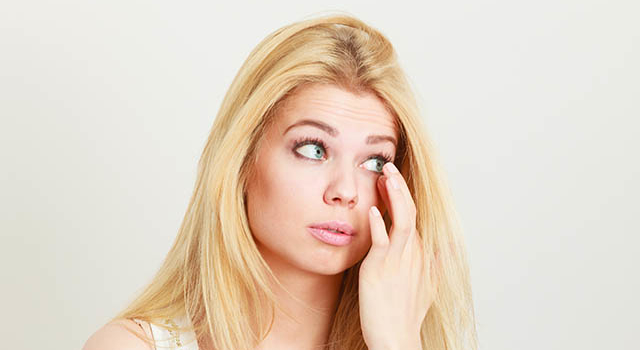
As the crisp fall air rolls in, many people look forward to cooler temperatures, cozy sweaters, and the changing colors of the leaves. However, for others, the fall season can bring about a less welcome change—dry eyes and seasonal allergies.
Fall allergens such as ragweed, mold spores, and dust mites can lead to uncomfortable symptoms that can be confused with or worsen dry eye syndrome.
Understanding the difference between dry eye and allergies, recognizing common triggers, and knowing when to visit an eye doctor is essential in managing symptoms.
Triggers of Dry Eye and Fall Allergies
During the fall, environmental changes can trigger dry eye symptoms and allergic reactions, often making distinguishing between the two conditions difficult. Here are some common triggers for both:
Dry Eye Triggers
- Cooler Air and Wind: As temperatures drop, dry and windy conditions can reduce the moisture in your eyes, exacerbating dry eye symptoms.
- Indoor Heating: Turning on the heat during colder months can strip the air of humidity, causing the eyes to become dry.
- Prolonged Screen Time: With people spending more time indoors during fall, increased screen use can contribute to dry eye due to reduced blinking.
- Dehydration: Cold weather often reduces water intake, worsening dry eye symptoms by affecting tear production.
Fall Allergy Triggers
- Ragweed Pollen: Ragweed is one of the most common fall allergens, and its pollen can cause irritation, redness, and watery eyes.
- Mold Spores: Fall is prime time for mold growth in damp areas, which can cause allergic reactions, including itchy and watery eyes.
- Dust Mites: As people spend more time indoors, exposure to dust mites increases, contributing to eye irritation and allergy symptoms.
- Leaf Mold: Piles of fallen leaves create a breeding ground for mold, which can trigger allergic reactions.
Differentiating Between Dry Eye and Allergies
While dry eye and allergies can share similar symptoms, there are a few key differences that can help you identify which condition you may be experiencing:
Dry Eye Symptoms
- Persistent dryness or a gritty sensation in the eyes
- Sensitivity to wind or dry air
- Blurred vision, especially after prolonged use of screens
- Eye fatigue or discomfort that worsens throughout the day
- Burning or stinging sensation in the eyes
Allergy Symptoms
- Itchy eyes, often accompanied by sneezing or nasal congestion
- Red, swollen, or watery eyes
- Sensitivity to pollen, dust, or mold exposure
- Symptoms that may flare up when outdoors or near allergens
- Puffy eyelids or under-eye circles
One of the main differences between dry eye and allergies is that dry eye often feels like a persistent lack of moisture, while allergies usually cause itchiness and excessive tearing. Both conditions can coexist.
Why You Should Visit an Eye Doctor
If you are struggling with eye discomfort this fall, schedule an appointment with your optometrist to get to the root of the issue. While over-the-counter treatments may offer temporary relief, only a thorough eye exam can give you a proper diagnosis and personalized treatment plan.
Benefits of an Eye Exam
- Accurate Diagnosis: Your eye doctor can differentiate between dry eye and allergies and determine if you are experiencing both conditions simultaneously.
- Personalized Treatment: Based on the results of your eye exam, they will recommend treatment options tailored to your needs. This may include artificial tears, prescription eye drops, antihistamines, or lifestyle changes.
- Prevention of Complications: Left untreated, chronic dry eye and allergies can lead to more severe issues, like inflammation, infections, or corneal damage. Early diagnosis and treatment can prevent these complications.
- Guidance on Managing Symptoms: Your eye doctor can also provide guidance on avoiding common triggers, like limiting outdoor exposure during high pollen days or using a humidifier to maintain indoor moisture.
Managing Dry Eye and Fall Allergies
Every individual’s symptoms are unique, which is why personalized care is essential for managing dry eye and seasonal allergies. During your eye exam at Sawyer Scott Eyecare Center, our eye doctors may suggest a combination of treatments and lifestyle adjustments to help you manage your symptoms throughout the fall season.
Schedule an Appointment in Sardis or Senatobia, MS
If you are experiencing dry eye symptoms or fall allergies that are affecting your daily life, don’t wait for the discomfort to get worse. Schedule an appointment with Sawyer Scott Eyecare Center for a comprehensive eye exam and personalized treatment plan. Our experienced team is here to help you navigate the challenges of dry eye and seasonal allergies, ensuring you enjoy the fall season with clear, comfortable vision.

